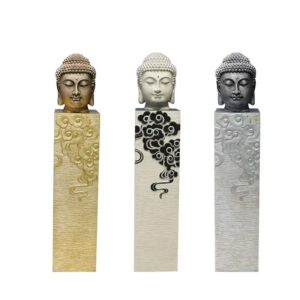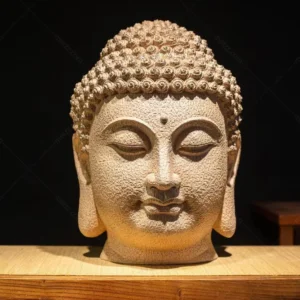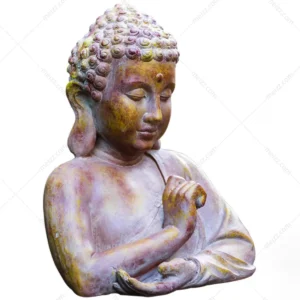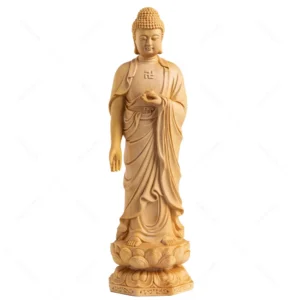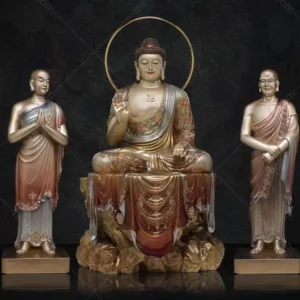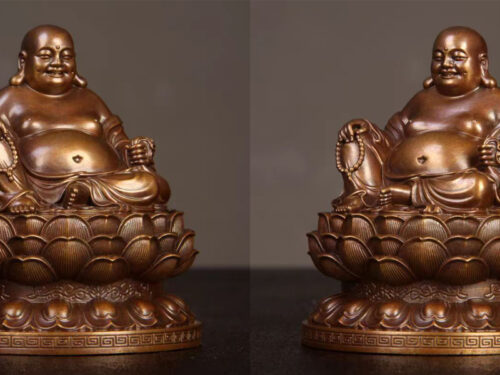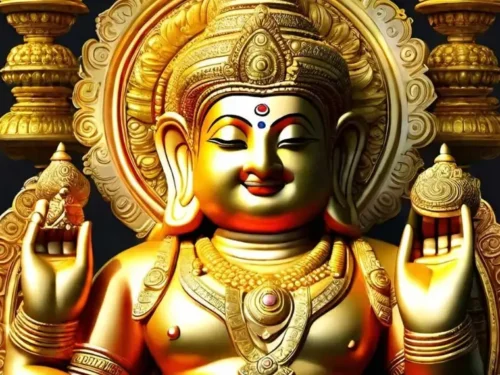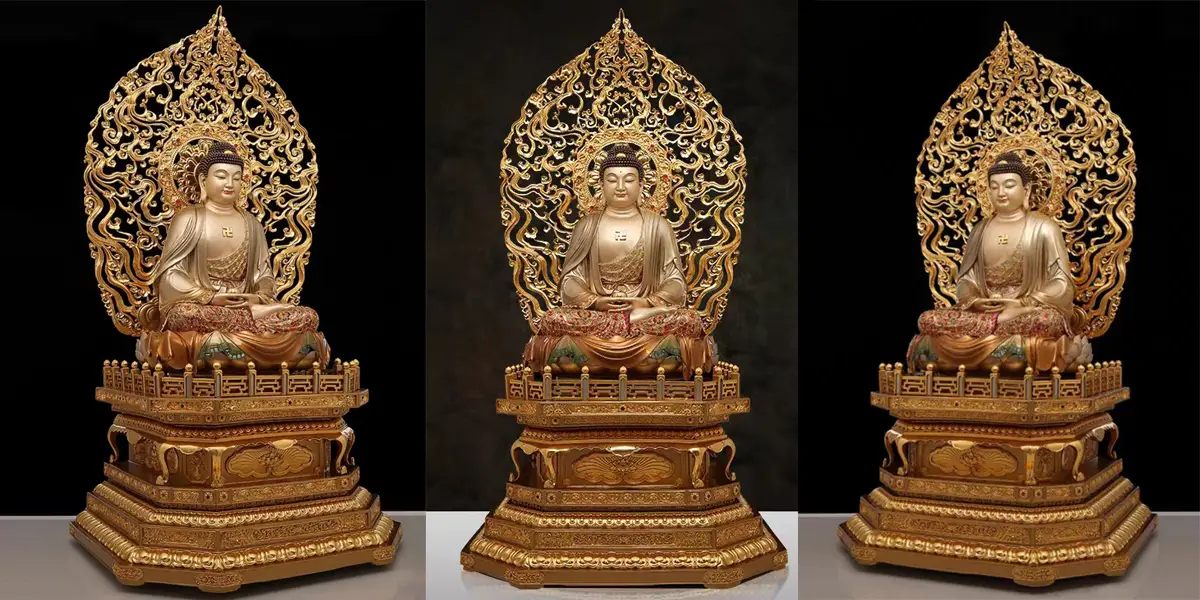
Table of contents
In Buddhist art, the different postures of the Buddha are not only decorative, but also symbolic and expressive of profound teachings. Each Buddha’s posture carries rich connotations, reflecting the Buddha’s thinking and enlightenment at different times. Through sculpture, we can glimpse the wisdom of the Buddha and feel his profound inner world. Let’s explore together what are the different types of Buddhas statues and their meanings?
Buddha Head Statue



Buddha head sculptures are widely used in indoor and outdoor decoration due to their unique characteristics, creating a peaceful and peaceful atmosphere. These sculptures come in various sizes and are suitable for various environments, adding spirituality and peace to the space.
Buddha Face Statue is not only a decoration, but also a symbol of enlightenment and wisdom. The head is regarded as a container of consciousness, therefore the Buddha head sculpture conveys profound wisdom and inspiration through its design. The symbols of divine existence, such as the top bun (the protruding part of the head) and hairline beads (the tuft of hair between the eyebrows), as well as partially closed eyes, symbolize the balance of inner and outer consciousness. The perfect nose and gently curved lips endow the Buddha head sculpture with all the necessary features to create a majestic Buddha statue. These sculptures not only showcase the wisdom of Buddha, but also inject a peaceful and transcendent force into the environment.
Placement and purpose:
Home and Office: Small and portable Buddha head sculptures are often used for home and office decoration, injecting a peaceful atmosphere into the space.
Meditation Corner: Believers can place Buddha head sculptures in their personal meditation corners for meditation and religious practice.
Gift giving: As a gift with spiritual and artistic value, Buddha head sculpture is also a unique gift choice.
Buddha bust statue


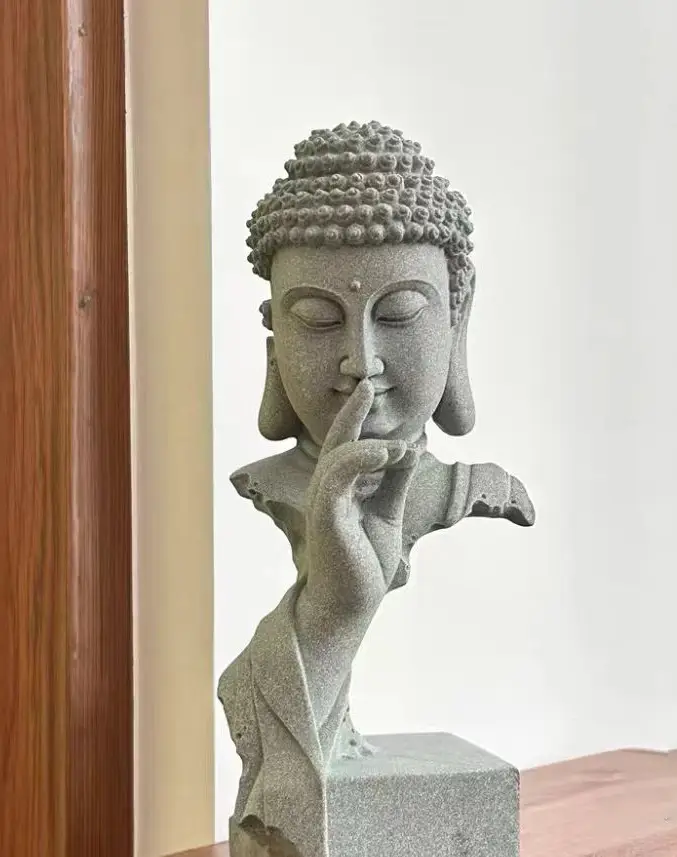
The Buddha bust statue is made by adding a neck and three lines on top of the Buddha’s head, resembling a shell, and adding broad and sturdy shoulders. The half body Buddha statue showcases the spiritual qualities of the Buddha through the Buddha’s head sculpture, while its robust chest and shoulders showcase his royal characteristics.
The Buddha bust statue presents a sense of balance through the perfect combination of the Buddha’s head, neck, and upper body. This Buddha statue aims to highlight the comprehensive perfection of the Buddha, complementing the gentleness of spirituality with the majesty of the ruler through meticulous carving and artistic design. This sculpture vividly displays the Buddha’s enlightenment realm, transcending all metaphysical and material limitations, and becoming the supreme ruler of both. The half body Buddha statue is both aesthetically pleasing and carries profound philosophical connotations, injecting a solemn and transcendent atmosphere into the space.
Placement and purpose:
Temples and Buddhist Temples: Half length Buddha statues are often placed in temples and Buddhist temples for believers to worship and worship.
Buddha niches or tables: Believers can place their half body Buddha statues on their personal Buddha niches or tables for daily meditation and religious rituals.
Art Collection: Due to its unique artistic value, bust Buddha statues can also become art collections, adding cultural and religious atmosphere to indoor spaces.
Different types of buddhas and their meanings: Standing Buddha Statue



Standing Buddha statues represent the pinnacle of Buddhist art in history. The Buddha statue fully carves out the sacred figure of the Buddha, who is dressed in a monk’s robe. The layering of the robe is clearly visible, and the standing Buddha statue achieves a perfect balance between movement and stillness, becoming a visual and mysterious gift in your space.
The Standing Buddha Statue in Buddhist creation is a representation of some crucial moments in the life of the Buddha. From the journey of Buddha from the palace to Bodhi Gaya, to his first preaching, and to preaching to thousands of people across the country, the Buddha’s life is full of symbols of standing and walking, all of which are the themes displayed by standing Buddha statues. The standing Buddha statue presents the Buddha’s body through exquisite carving, creating fascinating artistic examples that integrate the profound philosophy of Buddhism into every inch of sculpture.
Placement and purpose:
Buddhist temples and temples: Standing Buddha statues are often placed in Buddhist temples and temples, providing a place for believers to meditate and worship.
Personal Buddha Niche: Believers can set up personal Buddha niches at home, placing standing Buddha statues as the focus of daily practice and religious activities.
Decorative artworks: Due to its unique artistic value, standing Buddha statues can also be used as decorative artworks, adding spirituality and cultural atmosphere to indoor spaces.
Meditation Buddha Statue

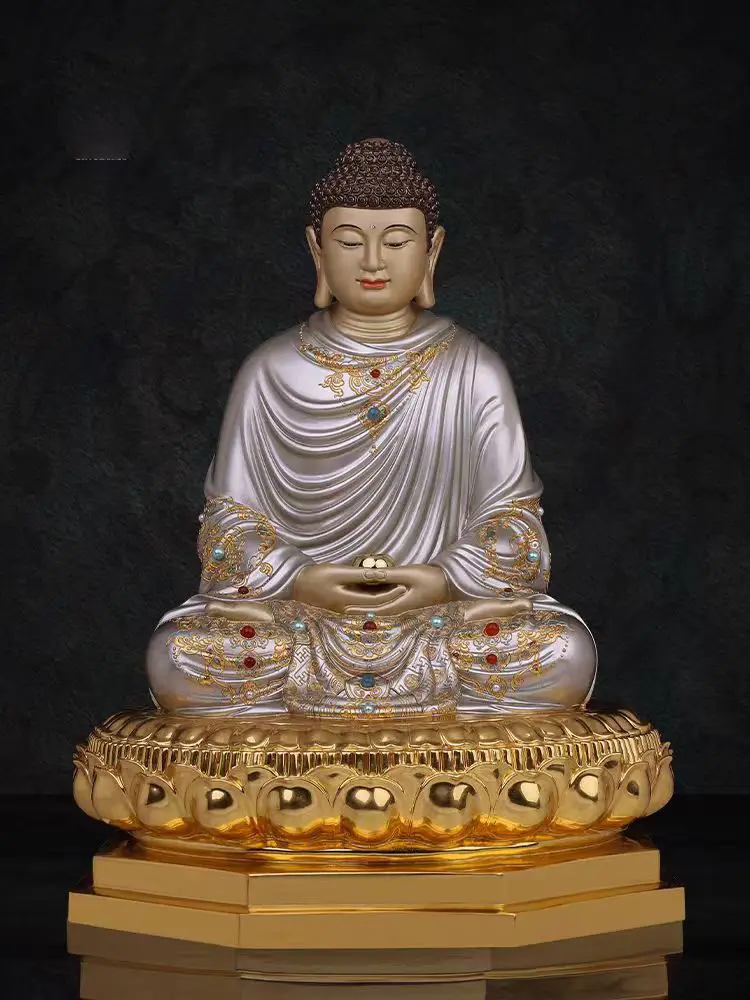

The Meditation buddha statue is characterized by solemn emotions, emphasizing the thoughtful facial expressions of the Buddha. Usually, this type of Buddha statue shows the Buddha leaning his head on one leg while the other leg is folded underneath, forming a focused meditation posture. Meditation or contemplation is considered a fundamental and powerful tool in Buddhism, through which practitioners answer many metaphysical questions and ultimately reach a state of enlightenment.
Buddhism emphasizes critical thinking to realize the inner potential of individuals. The contemplative Buddha statue is a vivid embodiment of this concept. By placing this icon in your space, you will be constantly reminded to be in a fully awakened state, which is one of the prerequisites for achieving spiritual awakening. The sculpture expresses the image of Buddha’s focused meditation, presenting a resonance of tranquility and concentration, injecting a peaceful atmosphere into the space.
Placement and purpose:
Meditation Area: Meditation Buddha statues are suitable for placement in personal meditation areas, promoting meditation and introspection.
Learning and workspace: For environments that require focus and thoughtful consideration, contemplative Buddha statues are an ideal choice for learning and workspace.
Reminder of inner potential: As a reminder of individual potential, contemplating Buddha statues stimulates recognition of one’s own potential.
Different types of buddhas and their meanings: Reclining Buddha Statue
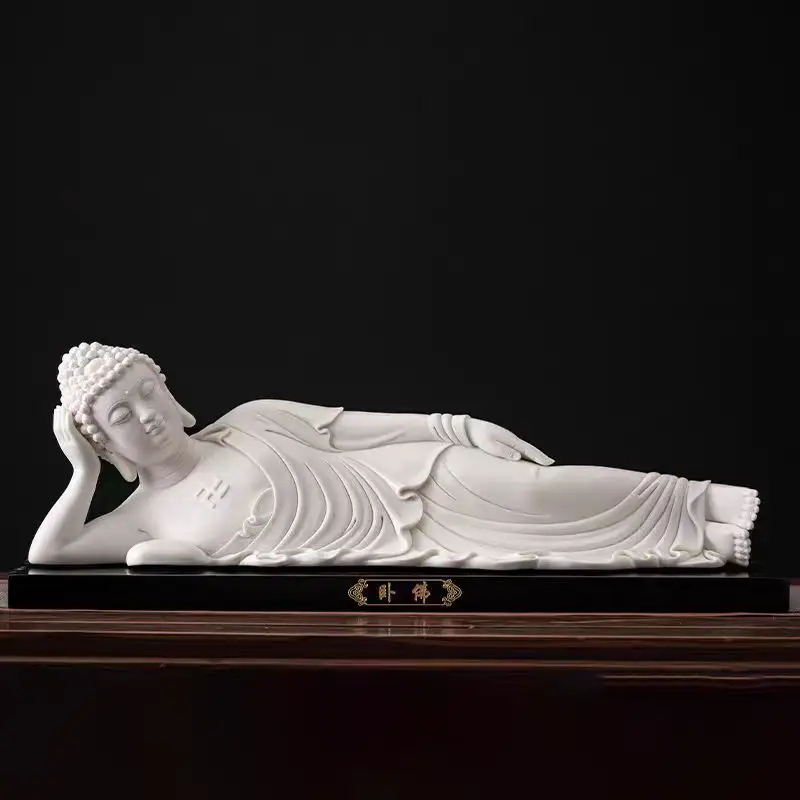


The Buddha statue lay there, almost smiling and contemplating, representing the Buddha’s great nirvana, his final journey away from the world. According to Buddhist tradition, the Buddha requested Ananda to prepare tatami mats for him. He lay on his side, head facing north, with one hand supporting his head, presenting a peaceful acceptance of death as the truth of life. Those who do not understand that Mahaparinirvana is a powerful symbol in Buddhism may refer to these statues as sleeping Buddha statues. However, the lying Buddha statue is a concrete manifestation of his completely fearless message, even in the face of death. Attachment leads to fear and pain, and complete transcendence of everything, including life itself, is the key to achieving pure wisdom.
Placement and purpose:
Buddhist temples: Sleeping Buddha sculptures are often placed in Buddhist temples as a tribute to the Buddha’s great nirvana and reflection on the truth of life and death.
Personal meditation area: As a decoration of the meditation area, the reclining Buddha sculpture reminds believers of the brevity of life and the pursuit of fearless wisdom.
Inner Peace: The sculpture of the reclining Buddha injects tranquility into the space through its posture and symbolic significance, allowing people to find peace between contemplation of life and death.
In the various sculptures of Buddha, what we see is not only a solemn Buddha statue, but also a concrete expression of life, wisdom, and the pursuit of transcending the world. These sculptures carry the teachings of Buddha and, through different postures, show us a path to inner peace and wisdom. May we also draw inspiration from these sculptures and move towards higher realms while appreciating them. Have you got any ideas about the different types of Buddhas statues and their meanings?

